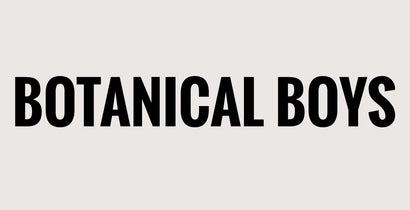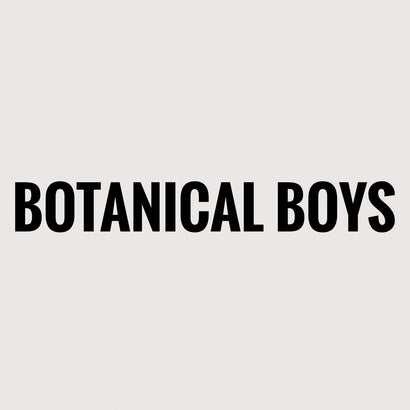Terrarium Care Guide
Closed Terrarium Care
Your terrarium is a closed self-sustaining environment which will not require too much maintenance once it’s settled, but it will require some basic care and attention especially in the first couple of months of building or purchasing one which we call the "settling-in period". We use plants that are happy in humid conditions but there are certain key things you need to be aware of to ensure your terrarium lives a long and healthy life.-
Lighting & Temperature: Each home has different heating and light conditions. We advise that terrariums in our own personal experience are best in a good natural light position. AVOID too direct Sunlight otherwise the terrarium will get very warm inside and you’ll have too much condensation. The average room temperature of around 19-21C is perfect.
-
Condensation: A terrarium holds moisture in the living materials. When they are built we add just an egg cup full of water to help bed the plants in the substrate. The moisture is very important for the terrarium humidity cycle for self-watering. The condensation occurs when cold air hits one side of the glass and the warm air inside the glass jar will rise causing condensation. This is normal and once room temperature equates the condensation should reduce. If your terrarium has too much condensation all of the time then it just means there is a bit too much moisture collecting inside so just remove your lid for approx half day to help it reduce the moisture. Then place your lid back. The goal is to have some humidity on the glass but not soaking wet. You should not need to remove your lid often as long you not watering it often.
-
Watering: A terrarium does not have a set watering routine like your houseplants in pots would have. Instead a terrarium is something you should observe over time for any changes. If your leaves are wilting and the moss looks pale green, open the lid and feel the soil and moss, if it’s dry give it a good spray of filter water approx 1 egg cup full or x2 egg cup full of it’s a very large terrarium. Then put your lid back on.
Common terrarium issues
Signs of mould or Fungus
-
White fluff on the leaves: If you find mould growth on your leaves, open your lid and remove the mould by wiping it off. Do not let mould grow out of control act early to avoid any plant issues. If however your leaf is already damaged it is best to prune that leaf off to prevent it decaying as it will leave a rotten type scent in the garden. Once mould has been removed take off your lid for a couple of hours or so to allow some air circulation to help dry out the terrarium slightly. Mould occurs from small spores or over humidity and cannot always be avoided but we can reduce it through air, less watering and less hot room conditions above 21 C. You may need to repeat this process a couple of times in it's first few weeks of settling, but eventually as long as the terrarium plants seem healthy it will adapt and start it's own eco-system cycle. We cannot guarantee all plants surviving or not getting any plant diseases but this guide is written from our own experience and some research on keeping terrariums.
-
Fungus (Mushrooms) can grow sometimes inside a terrarium. Leave them alone as they will naturally die off in a couple weeks. It’s a sign of a healthy terrarium.
-
Small white egg type spores/mushrooms growth: It's a type of mushroom fungus if you see small white dots and sometime Mycelium root growth. The fine spores can hitch a ride on plants or decorative moss and will usually thrive in a humid terrarium. Mushrooms are a sign of a very healthy environment and you can just let them grow they will die off in a couple of weeks. Mushrooms are beneficial for a terrarium by adding nutrients. If you want to remove them then you must wear gloves and a pair of tweezers to discard them into waste bin. Mushrooms can be toxic so do not eat them. Wash your tweezers afterwards.
To further reduce risk of mould and mushroom spores you can add “Springtails” tiny insects that clean debris.
Please ensure your terrarium is not wet as mushrooms also thrive in high humid environments. You just want your terrarium slightly moist, never wet. Remove your lid if this is the case for a couple days or so. -
To help reduce mould and mushroom spores the most organic solution we would use is “Neem oil” a milk-like substance helps prevents growth of spores.
-
Another organic way to reduce any mass of spores is to remove some of the substrate and replace with some fresh substrate you can purchase from our store.
-
Other pests: Small flies such as Fungus Gnats can be annoying as they have a long life of just whizzing around a terrarium. They can never be seen whilst planting a terrarium and usually reside in plant soil. The best way to reduce this is to remove as much soil from the plant roots as possible to reduce the miniature eggs before planting back into the terrarium. If however you still get flies they will not kill your plants, but are annoying to watch. Open your lid, let the terrarium almost dry out completely and that should reduce them by far. If they still return, repeat above step and you can remove plants and wash their roots and place them into a pot with fresh potting mix soil until you solved the terrarium fly issue. Once flies gone, re-water your terrarium and re-plant up.
-
Plants growing too tall: Not so much a problem, it means your terrarium is doing very well, so congratulations first of all. Open the lid and prune the stems back using scissors being careful of course. Or you can remove the larger plant into a bigger terrarium and replace with smaller terrarium plant instead.
-
Terrarium plants bending and stretching out: The terrarium needs more natural light. Move it to a brighter spot but avoid direct Sunlight.
-
Bonsai tree trunk has white spots: This is just small specks of mould. Open the lid for a few hours to air out and wipe off the offending mould from the trunk using a clean cloth. Do not use a brush as you will likely spread the spores to other plants.
-
Plants look weepy, dry and pale: Terrarium will need a drink at times unless you have a very tight lid seal then the need for moisture will be less and less as time goes on, if your lid is slightly loose then it will require water more often! Before you water your terrarium test soil with your finger if it's dry then water the base of the plants and soil with a small pipette or syringe with approx 2-3 tablespoons worth of filtered water. You never want to drown your terrarium it needs to be slightly moist only to work well.
- Your terrarium will need to settle into it's new home, be patient especially if it's only just been made unless you buy one of our terrariums that has had several weeks to settle in then you will need to follow a few steps above. They are a piece of science and sometimes not all terrariums are 100% successful but we do share with you our experience and advice as we have learned here with you.
- PLANT CARE: Please do contact us if you require further assistance.
Annual Care
-
Clean out dead leaves and general tidy up. Just like in a natural outdoor garden.
-
Some plants or mosses may have died so you will need to replace them.
-
Clean any decorative stones.
-
If your glass has any green algae growing on it, use an old credit card to swipe it off.
Peace of mind
Nature can sometimes be unpredictable but we offer advice based on our own research and experience. We offer all our clients a 30 day plant care guarantee, please get in touch for details. We do not guarantee glass vases. Contact us if there are any issues with your purchase and we will work with you to help solve any issues.
For plant replacements during or after the 30 day period since purchase we will need to ask you to cover the cost of our UPS deliver if you need them shipped. Or you can collect from our store at no cost.
Plant care and design service after 30 days we charge a small fee to cover our time and materials do get in touch.
Please see below some of the plants we use in our terrariums but this is not a full list.
Terrarium Plants
Fittonia
Colourful plants with nerve – like structures, also commonly known as “Nerve Plant”. They are from South American jungles and are used to dappled shade and moist conditions, but not wet!
Bun Moss
Hill shaped thick moss is perfect for green landscapes and add true nature to your terrarium garden. They like to be kept moist. Remember moisture from the moss equals moisture in your terrarium, so avoid watering plants too much. If it goes brown, remove the brown bits. It will grow upwards over time.
Chamaedorea (meaning "ground gift")
A native palm to subtropical and tropical regions (also known as Parlour Palm) they can be used in terrariums but will need a little pruning at times as they will grow tall over time. They give a terrarium a very tropical look and feel. They like high humidity but not soaking wet.![]()
Ficus Ginseng trees
Native to Africa and Asia, these little trees love to be kept in humid conditions. They will not require regular watering inside your terrarium unless the terrarium gets too dry. Check soil from time to time, if it's very dry water your terrarium. Pruning me if I get a little too bushy is easy, simply snip off the stems that have got a little bushy. This tree is part of the rubber family, so when you do snip the stems a white milky latex will flow out. It is sticky, so wash your hands, but it will seal itself up.
Polyscia Trees (meaning "many shade")
A fantastic indoor tree that actually tolerates shade quite well. I grow straight up by producing leaves from the bottom. I am native to the South Pacific region. It is also related to ginseng tree and Ivy. They add a lovely green woodland feel to your terrarium. Likes humid conditions and does not need a lot of watering in your terrarium. It can grow to over 1m in an open pot, but to keep it from going too tall, just prune the stems back a little if it goes too big over time.
Pilea
Native to South America region, they are tropical humid loving plants, commonly known as Friendship Plants. If they trail too long, simply prune them back, gives you a great excuse to do some micro garden maintenance.

